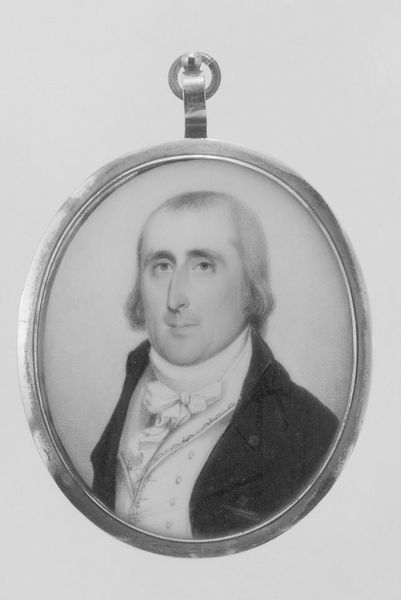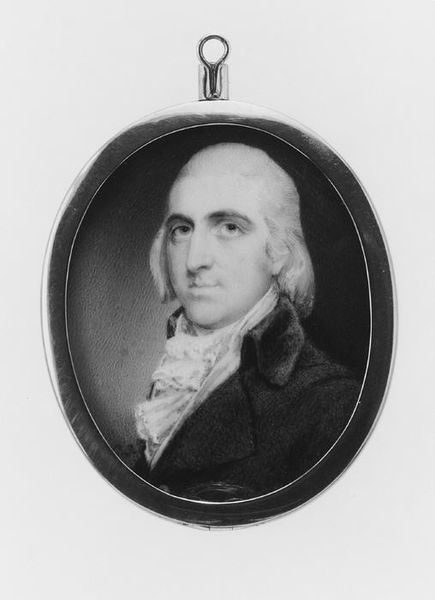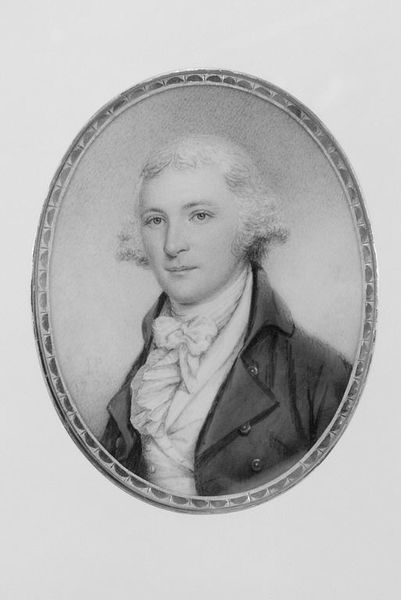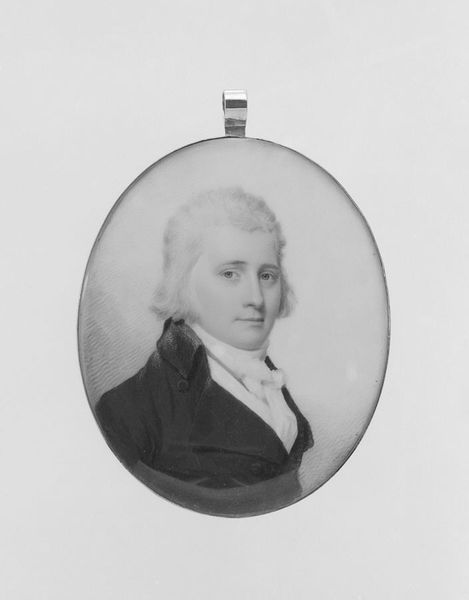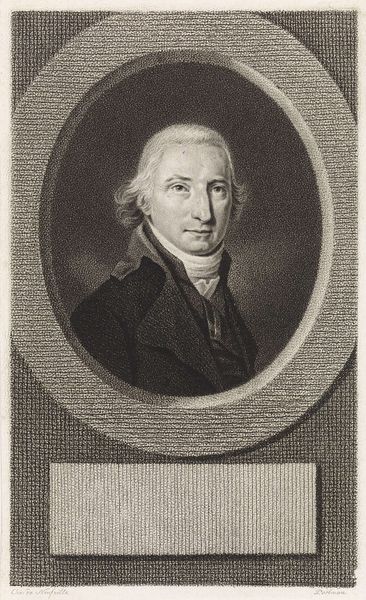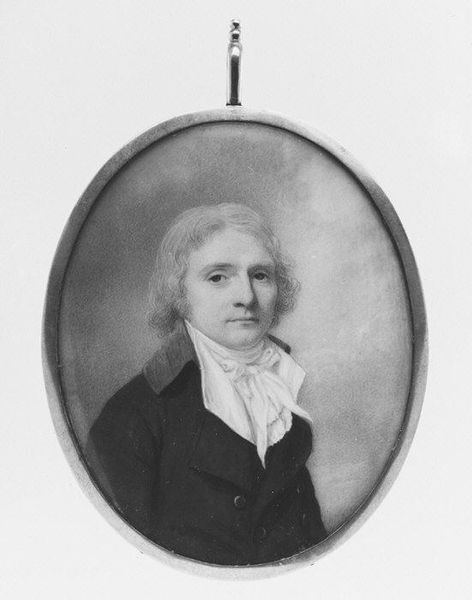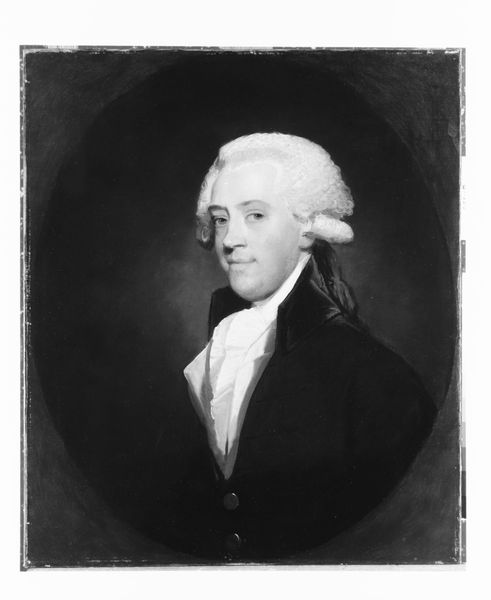
drawing, pencil, graphite
#
portrait
#
drawing
#
neoclacissism
#
black and white
#
pencil
#
graphite
Dimensions: Oval, 2 5/8 x 2 1/4 in. (67 x 56 mm)
Copyright: Public Domain
Curator: This graphite and pencil drawing from between 1785 and 1795, housed here at the Met, is titled "Portrait of a Man, Said to Be John Durham." It’s a stunning example of portraiture in the neoclassical style. Editor: Whoa. My first impression? That's a serious stare down coming from that little pendant! He looks like someone you definitely wouldn't want to spill tea on. And I mean literally *on*—I bet those wigs were not cheap. Curator: The seriousness you sense, I believe, stems partly from the era. Neoclassicism in portraiture often aimed to convey virtue and civic duty. Notice the clean lines and how his gaze meets ours directly. There’s an intention to project integrity. Editor: Oh, totally. Integrity and... a slight fear of powdered wigs catching fire! I think what I also find striking is how, even within a limited grayscale palette, there's such incredible texture. Look at the meticulous details in the hair. I could almost run my finger over it! It feels so real. Curator: Indeed. And those details speak to more than just realism; the wig itself is symbolic. It signified status, profession, belonging to a certain intellectual and social class during that time. It’s a potent marker. Editor: So he’s broadcasting, right? Like saying "Hey, look, I'm important! See my wig? Pay attention!" Maybe a touch arrogant? Curator: Perhaps less arrogance than a statement of self and purpose. In a world of evolving political and social structures, conveying one's place through dress and portraiture was a visual declaration. Especially interesting when, perhaps, the purported sitter might be "said" but not necessarily, the absolute, unquestioned "is." Editor: That almost makes it sound rebellious in its own way. Or is he playing a part, like an actor on stage? Fascinating to think about identity then versus now, and what we choose to highlight or hide through artifice. Even if he looks intimidating! Curator: It’s an evocative piece—a distillation of self and period rendered in miniature. What remains are questions around identity and the symbols used to convey it in public memory. Editor: Absolutely, you know? Beyond the stiff collar and stern look, it is also an intimate encounter with someone long gone, preserved, tiny, suspended, daring you to figure them out.
Comments
No comments
Be the first to comment and join the conversation on the ultimate creative platform.
